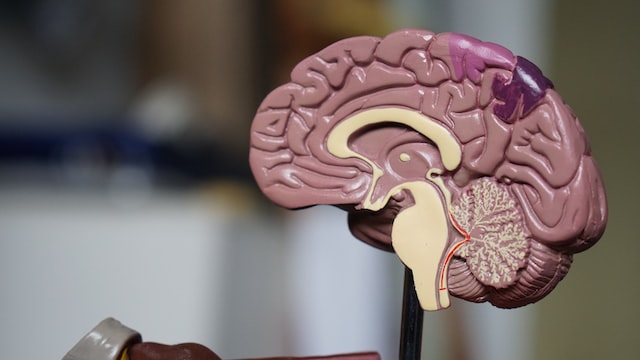According to official statistics, over five million Americans live with a particular form of disability due to a traumatic brain injury. Traumatic brain injury (TBI) contributes to about 30 percent of all injury-related deaths in America. According to the Centers for Disease Control (CDC, there were about 64,000 traumatic brain injury-related deaths in the year 2020, with 176 deaths each day.
Traumatic brain injuries can be caused by a sudden and violent bump or blow to the head, resulting in damage to the brain. Due to the shock, when the brain collides with the walls of the skull, it can suffer from tearing in walls, nerve damage, or bleeding. In cases of a fractured skull, the pieces can penetrate into the brain and cause severe damage.
TBI is one of the biggest causes of death and disability in America. Yet, the Internet is flooded with misconceptions and myths about the issue. This is why Brain Injury Awareness Month is marked every year in March to highlight the lack of awareness around traumatic brain injuries and their impact on people. Brain Injury Awareness Month is a significant opportunity for us to educate ourselves about the damaging and often life-changing consequences of TBIs and advocate for better resources and support to the concerned individuals.
To help in aiding the understanding of TBIs this Brain Injury Awareness Month, let us debunk the most widespread and damaging myths around the condition.

Debunking The Myths Around Traumatic Brain Injury
#Myth 1: If a person has not lost consciousness, there are no chances of any form of brain injury.
This is one of the most common myths about TBIs. People often think that not losing consciousness is a safe sign and signifies that there is no brain injury.
However, as per Mayo Clinic, mild brain injury does not often lead to unconsciousness. They leave a person feeling dazed and confused. So even though a person might not have lost consciousness, they can still suffer from mild brain injuries that can cause temporary damage to brain cells.
Mild brain injuries might not be lethal in nature but can often affect how a person thinks, acts, sleeps, and learns. Therefore they require immediate medical attention.
#Myth 2: Traumatic brain injuries can always be found in magnetic resonance imaging (MRIs) and computed tomography (CT) scans.
While MRIs and CT scans are often the go-to diagnostic techniques for traumatic brain injuries, it is essential to know that not all types of TBIs appear in these scans. In fact, as per research by Du Su Kim, less than 10% of people had any abnormal signs in their MRIs or CT scans following mild traumatic brain injuries.
CT scans are notably less likely to catch signs of mild TBIs. This is because they do not generally find soft tissue injuries. This is why CT scans miss about 10-20% of abnormalities compared to MRIs. TBIs also take some time to develop and, therefore, might not show up in the immediate results of CT scans.
MRI machines aren’t a foolproof solution either, as they often fail to showcase the true extent of microscopic brain and nerve damage. The problem is even more with older versions of MRI machines.
This is why these methods of diagnosing are not the final decision-makers on whether you have a TBI or not. Your doctor can use physical findings, neurological assessments, and case history to diagnose a TBI, even if your scans are normal. However, you might have to face difficulty with insurance claims as they are primarily based on pieces of evidence in the form of machine reports.
Read more: Deep Brain Stimulation For OCD
#Myth 3: You have to hit your head hard for a brain injury to happen.
A frightening aspect of traumatic brain injuries is that you don’t have to hit your head on a surface to develop them. Brain injuries can often occur due to instances like rapid acceleration and deacceleration during car accidents that push your head forward and then slams it backward in the airbag. So technically, even though you didn’t hit your head, you can still develop brain injuries. These are termed coup and contrecoup injuries.
#Myth 4: All brain injuries are treated equally.
Not all forms of brain injuries are equal in nature. They have three distinct categories – mild, moderate, and severe. They can also be differentiated based on whether the damage is closed or penetrating (open). Open brain injuries occur when the skull is penetrated and are rare.
The severity levels of brain injuries are decided on the basis of several factors, including:
- levels of consciousness,
- damage to the brain, and
- Resulting consequences.
Read more: Brain Fog – Definition, Feeling, and Treatment
#Myth 5: A Brain Injury will heal itself after some time.
Many people think traumatic brain injuries are synonymous with other physical injuries that might self-heal after a point. However, TBIs are highly damaging injuries and require proper professional help. They are highly complicated to diagnose and treat and require specialist knowledge. Therefore, it is crucial to treat brain injuries with seriousness and get timely and proper help for the concerned individual.
Conclusion:
Brain Injury Awareness Month is marked every year in March to help the public understand the incidents of brain injury and the needs of affected individuals and families. It also aims to clear the misunderstandings and myths around the issue that can lead to mismanagement of the patients.
Apart from Brain Injury Awareness Month, there is another crucial awareness day related to the human brain. Alzheimer’s and Brain Awareness Day encourages awareness around Alzheimer’s Disease and Dementia. To know more about it, click here.
To continue learning about mental health, subscribe to Your Mental Health Pal.

